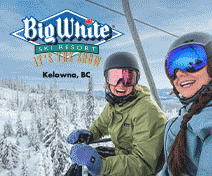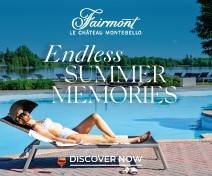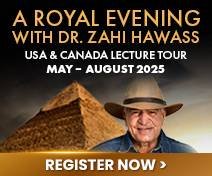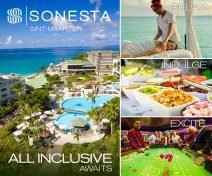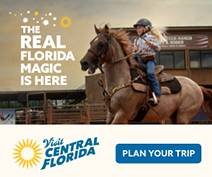BRITISH COLUMBIA

An RV Journey Through the Cariboo Chilcotin
by Diane Selkirk
There’s something quietly exhilarating about pulling onto the highway with your home on wheels. It’s not just the freedom of the open road—it’s the knowledge that your next cup of coffee, your afternoon hike, your evening of stargazing can happen wherever you choose.
And it turns out we’re not alone. A new survey from Go RVing Canada shows that while nearly 8 in 10 Canadians want to explore more of their own country, almost half haven’t yet ventured beyond their home province. With 2025 shaping up to be the year of the Canadian road trip, it felt like the perfect time to answer that call and discover what’s waiting beyond our familiar landscapes.
In British Columbia’s Cariboo Chilcotin, where mountain vistas meet desert plateaus and ancient Indigenous cultures thrive, RVing is the perfect way to explore at your own pace, unplug, and reconnect with the land.
That’s exactly what we set out to do this past summer on a five-day RV road trip through BC’s historic and cultural heartlands. We picked up our rental rig—a nearly 8-metre long Fraserway RV—in the city of Delta on a sunny Friday morning. After a helpful orientation, with the fridge stocked, playlist cued, and campground bookings confirmed, we rolled out of the city and pointed our wheels toward the Fraser Canyon.
Fraser Canyon Bound
Leaving Vancouver always feels like a reset. But heading into the Fraser Canyon—where steep cliffs loom above the churning river and train whistles echo through the trees—felt like stepping into another world.
Highway 1 may be the Trans-Canada Highway, but through this stretch, it’s neither the fastest nor most direct route east. Many drivers now opt for the Coquihalla—a quicker inland alternative—but they miss the slower, scenic rhythm of this historic corridor as it follows the mighty Fraser River north.
Beyond the town of Hope, the highway narrows and winds through small communities whose names speak to the river’s layered past: Spuzzum, named by the Nlaka’pamux for this patch of flat land above the river; Boston Bar, a remnant of the 1858–1861 Gold Rush when Americans—“Bostons” in Chinook Jargon—sought treasure in the sandbars; and Kanaka Bar, honouring Hawaiian labourers who became part of the region’s story.
Our first stop was Kumsheen Rafting Resort in Lytton, near the dramatic confluence of the Thompson and Fraser rivers. Pulling into our RV site, we easily levelled our little home, rolled out the awnings, and took in the view across the milky-green Thompson toward the chalky cliffs of the White Canyon. Thunderheads gathered above the peaks as we settled in, and a quick afternoon storm forced us to retreat into the dry comfort of the RV with celebratory cocktails. But soon, the sky cleared, and we were back outside—soaking in the hot tub, river murmuring below, evening light stretching across the valley.
The Thompson, the Fraser’s largest tributary, is also the lifeblood of Kumsheen’s rafting adventures. Thanks to founder Bernie Fandrich, this stretch has become legendary. Big rapids like the Frog and Mother-in-law offer a thrill—but we’d come for the stories. Kumsheen’s rafting trips are a crash course in geology and cultural history, a fast-paced ride through terrain shaped by water, time, and the people who’ve called this canyon home since time immemorial. Our half-day trip was the perfect introduction to the landscapes ahead.
Time Travel at Historic Hat Creek
North of Lytton, sagebrush and golden hills announce BC’s semi-arid interior. Our next stop was Historic Hat Creek Ranch, a living history site along the original Cariboo Wagon Road, operated by the St’uxwtews Pesuten Heritage Society.
Before checking in, we visited the nearby McAbee Fossil Fields, a rich site with fossils dating back 52 million years. Also operated by the St’uxwtews Pesuten Heritage Society, the area features trails and interpretive signage. Guide Adrian Lewis walked us through native plants and their traditional uses, then pointed us toward one of his favourite hikes, with views across the hoodoo-studded hills and Thompson River. It was a fascinating glimpse into the balance between tourism, science, and Indigenous stewardship.
Arriving at Hat Creek Ranch, we parked beside rustic barns and grassy fields, then wandered the property. One perk of camping overnight: after-hours access. Original roadhouse buildings, Indigenous interpretation sites, and stagecoach rides brought the Gold Rush era to life, while curious marmots kept us entertained.
Culture and Connection
The next morning, we lingered over coffee before taking in the ranch’s Indigenous interpretation areas, to learn more about the Stuctwesemc people. From the reconstructed pit house to traditional food prep zones, these spaces ground the site in a deeper reality: before it was a roadhouse, it was a home.
In the afternoon, we rejoined the Fraser and drove to Xwísten Experience Tours near Lillooet. Our guide, Joshua Jack, led us out onto the rocks of the Bridge River Fishing Grounds, one of North America’s oldest continually used fishing sites. He shared how salmon continue to nourish his community—not just physically, but spiritually and culturally.
We then ventured deeper into the landscape to an active archaeological site containing over 80 identified pit houses (s7ístken)—the traditional winter homes of the St’át’imc people. Wandering through the circular depressions, Jack’s awe was contagious. Before the Gold Rush, some 2,000–3,000 of his ancestors had lived in this one village. Excavations on just one of the homes—wrapped up last year—revealed it had been continuously rebuilt and reoccupied some 18 times over at least 2,000 years.
Mountain Magic
Leaving the dry plateau and re-entering the Coast Mountains comes with a dramatic shift. The road climbs and twists past steep drop-offs and forested ridges as it follows Cayoosh Creek. That night, we stayed at Riverside Resort in Whistler—an RV-friendly campground that feels like a mountain hideaway, with wooded sites and trails at the doorstep.
But before settling in, we stopped in Whistler Village to visit the Squamish Lil’wat Cultural Centre. The architecture alone is worth the visit—a soaring, light-filled building that blends Indigenous design with contemporary flair. Inside, exhibits and guided tours offer a powerful introduction to the Lil’wat and Squamish Nations’ traditions and artistry. After four days of history and nature, the centre helped bring it all together—showing that culture isn’t just preserved; it’s evolving.
We capped off our final morning with a soak at the nearby Scandinave Spa—a soothing treat before making the journey back to Vancouver, refreshed.
Why RV Now?
As we pulled back into Fraserway RV’s Delta lot on Tuesday, we were already planning our next trip. RVing in BC gave us a kind of freedom that’s hard to replicate: we went off-grid when we wanted to, plugged in when we needed comfort, and let the rhythm of the road guide us. With Go RVing Canada as our resource hub, the logistics were easy. Their RV Matchmaker tool can help you choose the right rig, and their campground finder and trip-planning guides gave us the confidence to go beyond the usual routes. For us, that meant a mix of cultural immersion, natural wonder, and pure road trip adventure. We laughed, learned things we hadn’t expected, and sat in quiet wonder as the landscape shifted. That’s the RV lifestyle: comfort, connection, and the chance to live a little more deeply. gorving.ca



